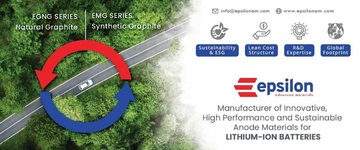ONE reveals 1007 Wh/L anode-free cell that enables 600-mile Gemini battery architecture
Michigan-based energy storage company Our Next Energy (ONE) has announced that it has unveiled a 240-Ah prismatic anode-free cell after a successful 12-month R&D effort.
The company believes its anode-free cell is the highest energy density large-format cell ever produced. The breakthrough technology will enable the commercialization of ONE's Gemini™ dual-chemistry architecture, which will be integrated into a BMW iX prototype vehicle later this year.
ONE's first-generation 1007 Wh/L cell eliminates the need for graphite and anode manufacturing equipment, enabling $50 per kWh cell cost at scale.
"Our prismatic anode-free cell is produced with approximately half of current cell manufacturing equipment for equivalent capacity, allowing us to sharply reduce scale-up cost," said Mujeeb Ijaz, founder, and CEO of ONE.
Anode-free cells typically have low cycle life compared to conventional cells, which has not made them viable in an automotive setting. ONE's Gemini dual-chemistry architecture has opened a straightforward path to widespread use of anode-free cells by reducing cycle and peak power requirements by 90 percent. Gemini pairs more standardized LFP and anode-free chemistries into one battery pack, enabled by the company's proprietary DC-DC converter. This allows each specialty chemistry to focus on different functions: LFP for daily driving and anode-free to extend the range for long distances. This combined system is expected to deliver more than 250,000 miles of lifetime service.
"Scaling 100x from a 2 Ah pouch cell to a 240 Ah prismatic in less than 12 months is a testament to the simplicity of the design and ability to use conventional Li-ion production equipment," said Dr. Steven Kaye, ONE Chief Technical Officer.
"We are moving faster than the fastest research programs that I have been a part of. Gemini will reach volume production in 2026 accelerating electric vehicle adoption by delivering 600 miles of range in a wide range of vehicle platforms, including trucks and SUVs."




















